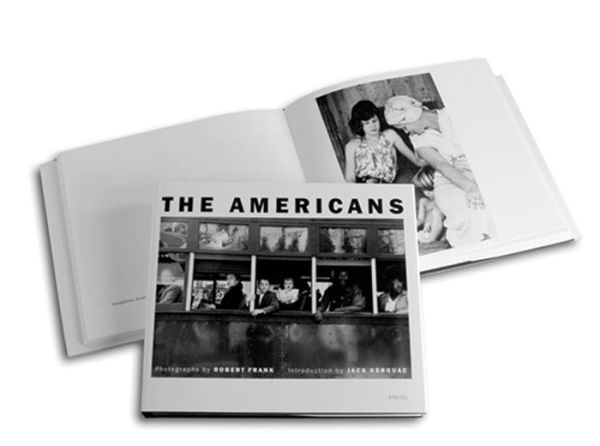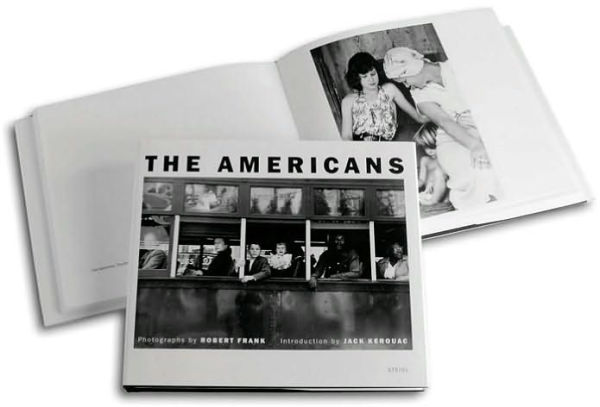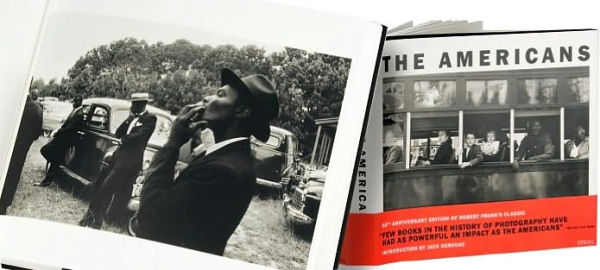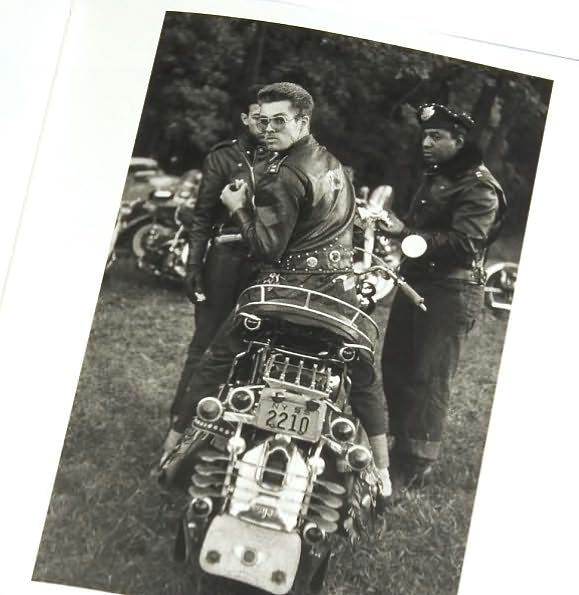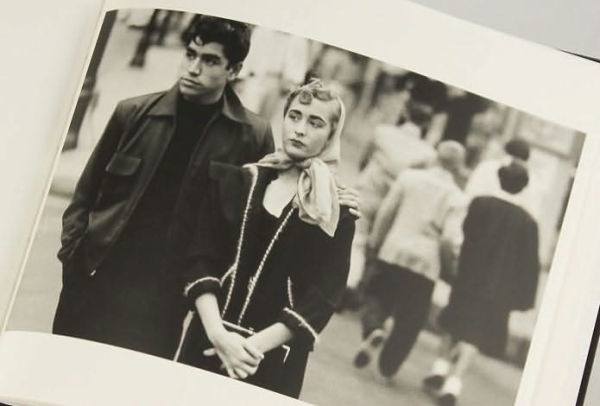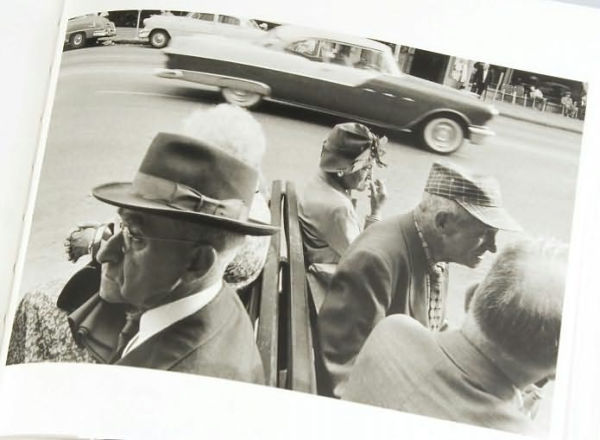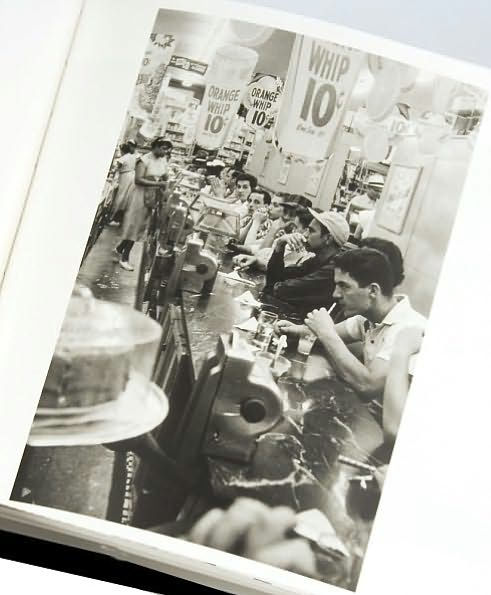In 1955, a 31-year-old Swiss émigré photographer named Robert Frank loaded his wife and two children into a rattletrap automobile and set out to discover America. Financed by a Guggenheim fellowship, over two years Frank took more than 28,000 shots, which he gradually winnowed to the 83 images he arranged in The Americans, his groundbreaking book of photographs.
"Robert Frank established a new iconography for contemporary America," said John Szarkowski, the influential curator at the Museum of Modern Art; "bits of bus depots, lunch counters, strip developments, empty spaces, cars, and unknowable faces." In his attempt to replicate Walker Evans's celebrated documentation of the Great Depression, Frank abandoned the sharp focus, even framing, and careful lighting characteristic of postwar photography, a style Frank had mastered in his work for clients such as Vogue, Fortune, Life, and Harper's Bazaar.
For his haunting representations of empty highways, desolate houses, and alienated individuals, Frank created a moody chiaroscuro: shadowed lighting, unusual angles, abrupt cropping, grainy texture, and deliberately blurred focus. The combination of subject and style seems a visual summary of the decade: The Lonely Crowd meets On the Road. (Indeed, Jack Kerouac wrote the introduction to the book.)
So revolutionary was The Americans that Frank had to publish the book in France; the first American edition appeared a year later, in 1959. The photography establishment, perhaps unsurprisingly, condemned it: Popular Photography, for example, disparaged Frank's work as "meaningless blur, grain, muddy exposures, drunken horizons and general sloppiness"; sales amounted to only 600 the first year. However, for a young generation of photographers, The Americans was a revelation. Frank's style of personal documentary, his "irony and detachment," as Walker Evans put it, is evident in the work of Lee Friedlander, Diane Arbus, Garry Winogrand, Danny Lyon, Bruce Davidson, and Nan Goldin, among others. Frank himself received his first individual show in 1961, at the Art Institute of Chicago and first exhibited at the Museum of Modern Art the next year. "You can photograph anything now," Frank declared; as John Szarkowski commented, his "iconography has become a common coin," discernible in fashion advertisements, films, and rock music -- perhaps Frank's most widely seen work is the cover for the Rolling Stones' album Exile on Main Street.
Appearing at the close of the 1950s, The Americans has commonly been interpreted as a covert political judgment of the United States (random examples: "The Americans represented a significant challenge to America's image of itself"; the book is "a critique of America"). Fifty years on, it may -- at last -- be possible to appreciate Frank's achievement for its artistry, especially in Steidl's beautiful new edition, which uses modern reproduction techniques and which enjoyed Frank's close collaboration: he recropped some images and changed two of them from the original edition. And now that the aesthetic of The Americans is what most of us think of as the look of art photography, we no longer are disconcerted (or exhilarated) by the shock of the new. Rather, it is possible to confront, and to be confounded by, the sheer force of Frank's vision.
A driven, uncompromising artist (shortly after finishing The Americans, he abandoned photography and devoted himself to filmmaking; his 30 movies include Pull My Daisy and a documentary about the Rolling Stones), Frank invests the subjects of his photographs with a psychic unease difficult to describe and impossible to evade. He depicts the ordinary -- a political rally, a funeral, a college graduation, a cafeteria -- yet imbues each with an uncanny malaise, the banality of the uncanny. His vision contrasts tellingly with that of a photographer who might seem a kindred spirit, Diane Arbus. However, Arbus's choice of the outré -- the nudists, the freaks, the eccentrics -- betrays her self-conscious self-satisfaction: what an arty outcast am I! Frank's isolation is far more profound; his estrangement from the mundane is not a matter of choice but almost a psychic penance. And his craft is cunningly concealed. His snapshot aesthetic may appear casual, the images seemingly taken on the fly, but their composition serves to anchor as well as capture a fleeting moment, which, now recorded, becomes emblematic. (This technique of imposing artistic discipline on random contingencies recalls the work of another émigré master artist of the'50s: Alfred Hitchcock, cinema's premier expositor of psychological subversion.)
Frank rigorously organized the sequence of photographs in The Americans. Each "chapter" begins with an image of the flag: obscuring the windows of a tenement, hanging on the wall of a Navy recruiting office, at a Fourth of July picnic, adorning a tavern between paintings of Washington and Lincoln. What follows may be a platform orator, a blunt depiction of racial segregation on a southern bus, a rodeo cowboy, a Yom Kippur service, a television studio, a sharecropper's cabin. What story do these pictures tell? Who can say? Meaning seems to be just beyond comprehension, frustratingly present but tantalizingly out of reach. "I do not anticipate that the onlooker will share my viewpoint," Frank wrote in 1958. "I feel that if my photograph leaves an image on his mind -- something has been accomplished." What is left by The Americans is an uncertain discomfiture, the quiet anxiety that one has beheld more than one has absorbed, let alone understood. And yet, one also feels that one knows more than one can express. The vision of Robert Frank is relentless but not dispassionate, penetrating but not cruel, witty but not cynical. Most of all, it is distinct, unitary, mastered by a determined exercise of artistic control. To view The Americans is to surrender to the exemplary power of artistic accomplishment. --Michael Anderson
Michael Anderson, a former editor at The New York Times Book Review, is writing a biography of the playwright Lorraine Hansberry.













